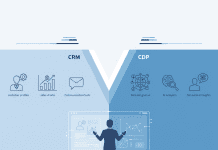The global Software-as-a-Service (SaaS) market is booming. Valued at $266.23 billion in 2024, it’s projected to grow significantly by 2032. Amid this rapid growth, businesses are moving away from bloated software suites and increasingly looking for lean, efficient solutions. Enter Micro-SaaS: small, focused software tools that solve one problem exceptionally well. For B2B decision-makers globally, Micro-SaaS transforms businesses by offering a strategic advantage. With faster adoption cycles, lower overheads, and higher ROI, these tools are shaping the future of enterprise software.
This trend signals a major shift in enterprise software consumption. Businesses are strategically seeking focused functionality over bloated feature sets. Micro-SaaS delivers targeted solutions for high-impact problems, from lead qualification to niche data analysis, giving adopters a competitive edge. It turns technology investment into a tactical advantage, ensuring maximum efficiency without unnecessary overhead.
1. What Is Micro-SaaS?
Micro-SaaS refers to small-scale, niche-focused software solutions that cater to specific problems within a particular industry or business function. Unlike traditional SaaS platforms that offer broad functionalities, Micro-SaaS products are designed to solve one problem exceptionally well, often with a lean team and minimal overhead.
Key Characteristics:
- Niche Focus – Targets a specific problem or audience.
- Lean Operations – Operated by small teams, often solo founders.
- Scalability – Built to scale efficiently without significant resource investment.
- Recurring Revenue – Typically follows a subscription-based model.
2. The Rise of Micro-SaaS: Market Trends and Growth
The Micro-SaaS market is experiencing rapid growth. In 2024, the market was valued at $15.7 billion, with projections to reach $59.6 billion by 2030, reflecting a conservative 25% CAGR. This surge is driven by several factors:
- Increased Demand for Specialized Solutions – Businesses are seeking tools that address specific needs rather than one-size-fits-all platforms.
- Advancements in Technology – The proliferation of low-code/no-code platforms has made it easier to develop and deploy Micro-SaaS products.
- Cost Efficiency – Micro-SaaS solutions often offer more affordable pricing models, making them accessible to small and medium-sized enterprises (SMEs).
3. Why “Less” Is More: The Power of Focused Solutions
In the crowded SaaS marketplace, differentiation is key. Micro-SaaS products stand out by offering:
- Simplicity – Easy-to-use interfaces with minimal setup requirements.
- Speed – Quick deployment and immediate value realization.
- Customization – Tailored features that align closely with user needs.
By focusing on a single problem, Micro-SaaS solutions can deliver more effective and efficient outcomes, leading to higher customer satisfaction and retention.
4. Micro-SaaS in B2B: Solving Enterprise Challenges Efficiently
For B2B enterprises, adopting Micro-SaaS can lead to:
- Enhanced Productivity – Streamlined processes and automation of routine tasks.
- Cost Savings – Reduced need for extensive training and support.
- Agility – Ability to quickly adapt to changing business requirements.
Whether it’s automating lead generation, managing customer relationships, or analyzing data, Micro-SaaS tools can provide targeted solutions that drive business growth.
5. Building a Lead Generation Engine for Micro-SaaS
Effective lead generation is crucial for the success of any Micro-SaaS product. Strategies include:
- Content Marketing – Creating valuable content that addresses the pain points of your target audience.
- SEO Optimization – Ensuring your product is discoverable through search engines.
- Referral Programs – Encouraging existing users to refer new customers.
By implementing these strategies, Micro-SaaS providers can build a steady stream of qualified leads.
6. Scaling Without Losing Focus: Strategies for Growth
As your Micro-SaaS business grows, it’s essential to:
- Maintain Core Focus – Continue to address the primary problem your product was designed to solve.
- Iterate Based on Feedback – Regularly update your product based on user feedback and market trends.
- Expand Thoughtfully – Consider adding complementary features that enhance the user experience without deviating from your core offering.
By scaling thoughtfully, Micro-SaaS businesses can achieve sustainable growth while maintaining their unique value proposition.
Conclusion
Micro-SaaS represents a paradigm shift in the SaaS industry. By focusing on specific problems and delivering targeted solutions, Micro-SaaS products offer significant value to businesses worldwide. For B2B decision-makers, embracing this model can lead to improved efficiency, cost savings, and a competitive edge in the marketplace.
I hope you find the above content helpful. For more such informative content, please visit Martecedge.
FAQs
- What is Micro-SaaS?
Micro-SaaS refers to small-scale software solutions that address specific business problems with precision and efficiency. - How is Micro-SaaS different from traditional SaaS?
Unlike traditional SaaS platforms that offer broad functionalities, Micro-SaaS products focus on solving one problem exceptionally well. - What are the benefits of adopting Micro-SaaS?
Benefits include enhanced productivity, cost savings, and agility in addressing business challenges. - How can Micro-SaaS contribute to lead generation?
By providing targeted solutions, Micro-SaaS products can attract qualified leads through effective marketing strategies. - Is Micro-SaaS suitable for large enterprises?
Yes, Micro-SaaS can provide specialized solutions that meet the unique needs of large enterprises. - What is the future outlook for Micro-SaaS?
The Micro-SaaS market is projected to experience significant growth, driven by increasing demand for specialized solutions and advancements in technology.










